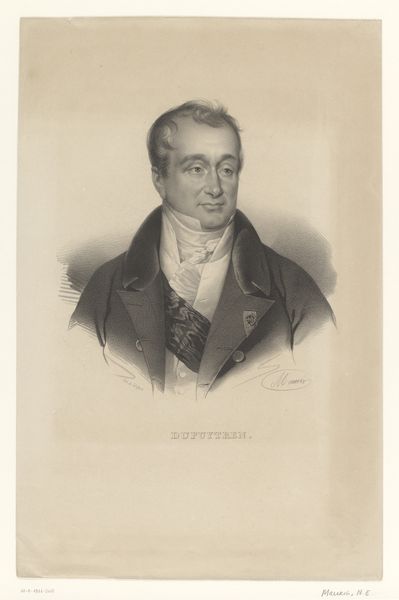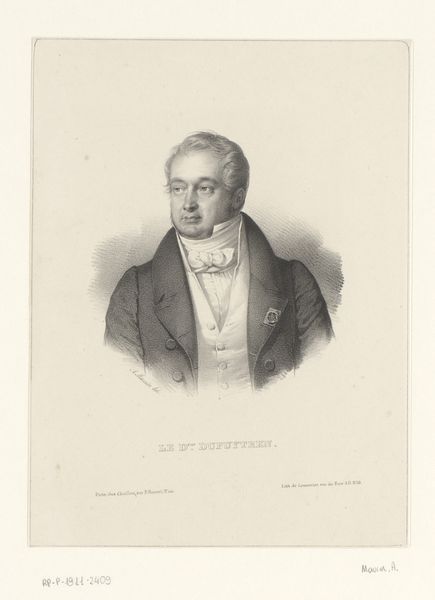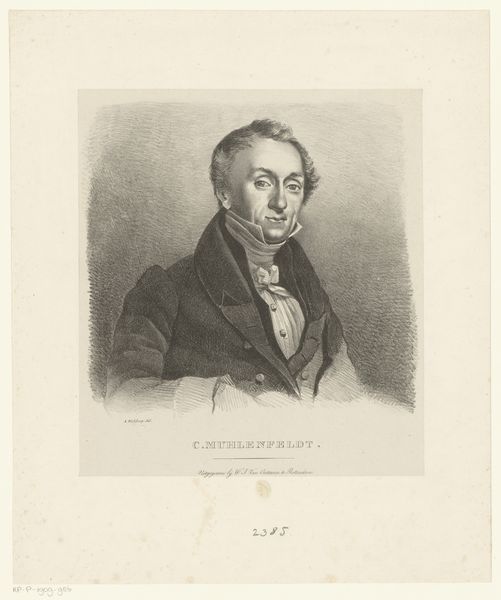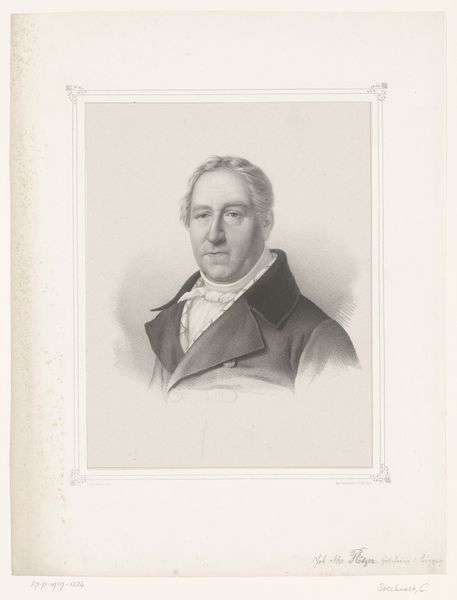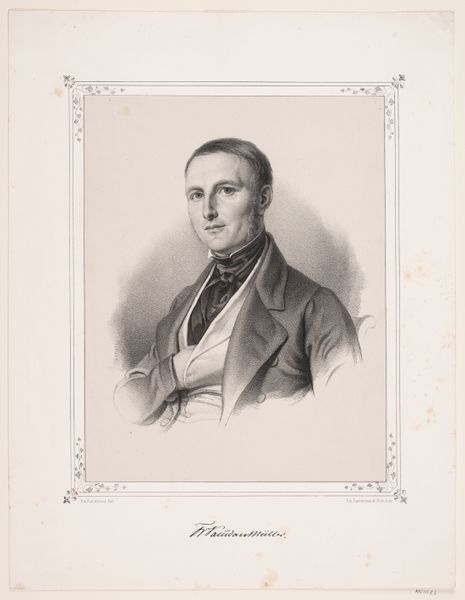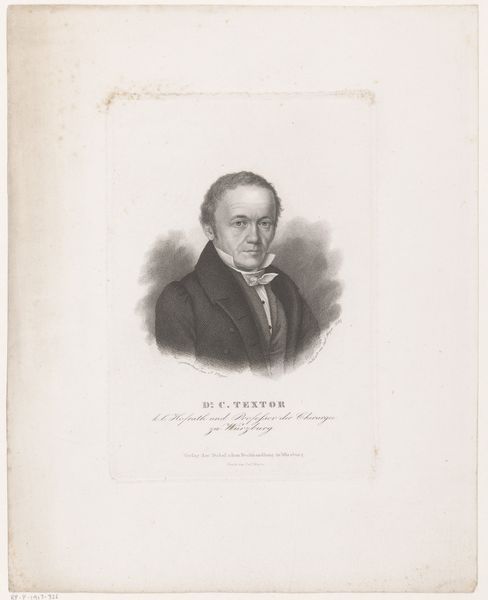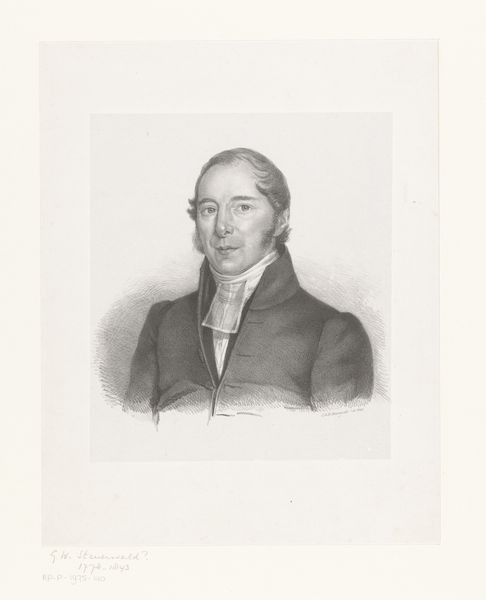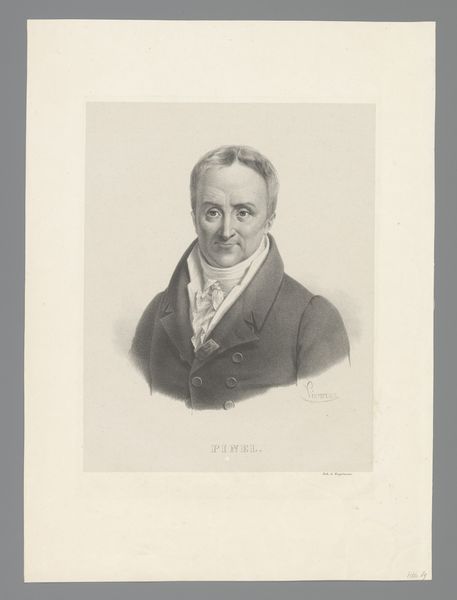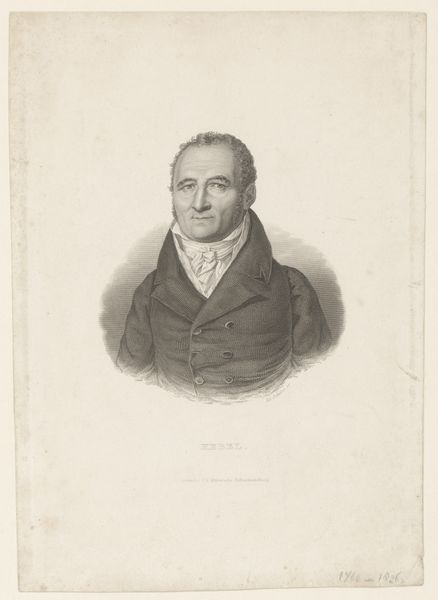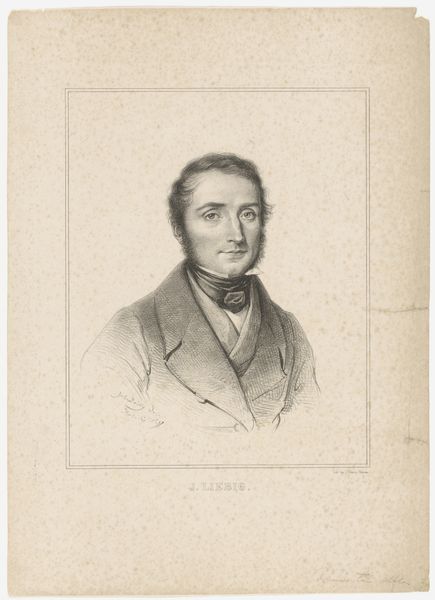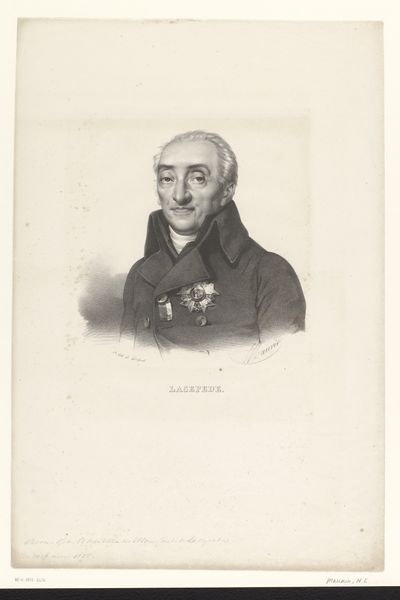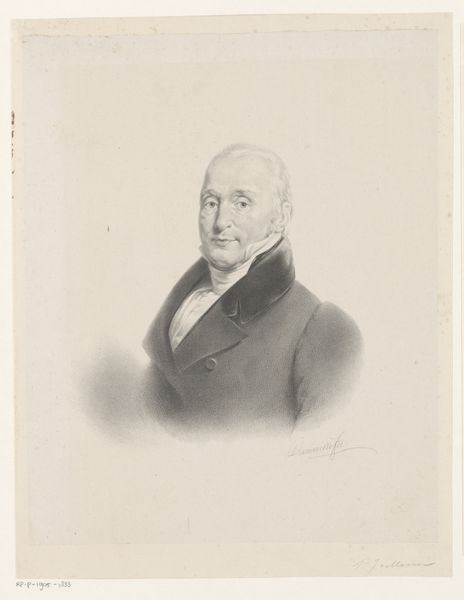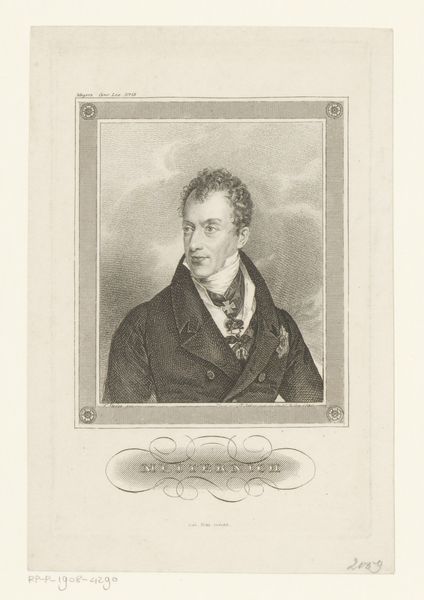
drawing, print, engraving
#
portrait
#
drawing
#
neoclacissism
# print
#
history-painting
#
academic-art
#
engraving
Dimensions: height 175 mm, width 140 mm
Copyright: Rijks Museum: Open Domain
Curator: Oh, there’s something deeply haunting in the cool greys of this print. It’s Achille Martinet’s “Portrait of Guillaume Dupuytren,” dating roughly between 1816 and 1877. Funny how a simple engraving can evoke such a pensive mood, isn’t it? Editor: It does feel incredibly formal, almost imposing. Dupuytren, for those who might not know, was a prominent French anatomist and surgeon. Knowing that, and seeing this rather stiff, Neoclassical representation... It's a picture of power, really. An intellectual elite memorialized in print. Curator: Exactly! You see the meticulous detail in the shading around his eyes? Martinet really captured a certain intensity. But it’s more than just a face, don't you think? It's the entire historical weight of academic art pressing down, asking you to consider legacy and authority. It’s strangely… gentle and forceful, at once. Like a whisper-shout. Editor: I think the choice of engraving is key here. It's a reproductive medium. These portraits circulated; they cemented Dupuytren’s status. It makes you consider who has the power to be memorialized, reproduced, and distributed so widely. This is more than just an individual; it’s a system of knowledge and power being perpetuated. Curator: You're absolutely right. The medium underscores the message. I do love how Martinet handled the textures, though. The delicate rendering of his coat versus the crispness of his cravat. It makes me wonder, what did Dupuytren *actually* think of all this pomp and circumstance? Was he in on the game, or merely a subject within it? Editor: It raises crucial questions. About representation, about power, about the very systems that uplift and memorialize certain figures while simultaneously obscuring others. How do we, as viewers, actively resist or engage critically with these portrayals from the past? Curator: Well, that’s the delicious part, isn’t it? We can stare back, question, and even reimagine. Thank you, Martinet and Dupuytren, for unintentionally offering us so much to unravel. Editor: Indeed. It’s through this continued engagement, this dialogue with the past, that we can hopefully forge a more equitable and representative future.
Comments
No comments
Be the first to comment and join the conversation on the ultimate creative platform.
